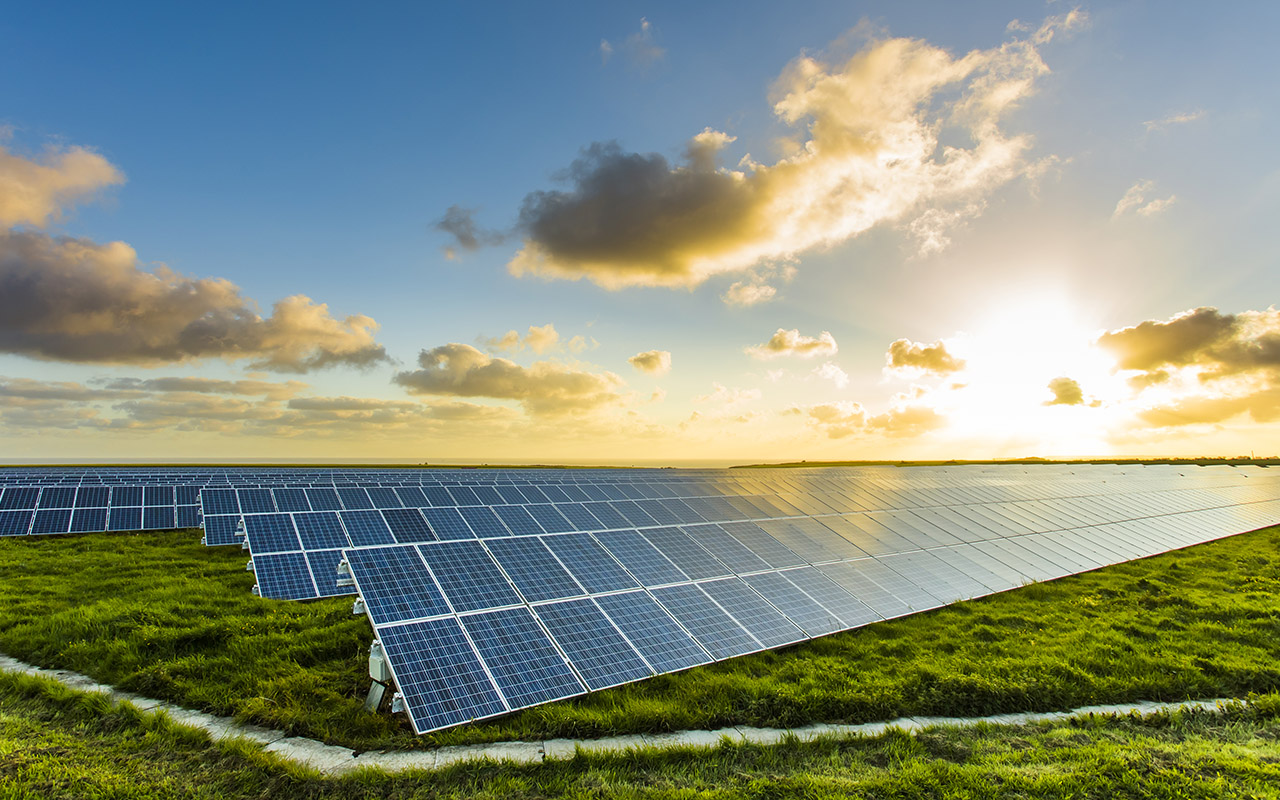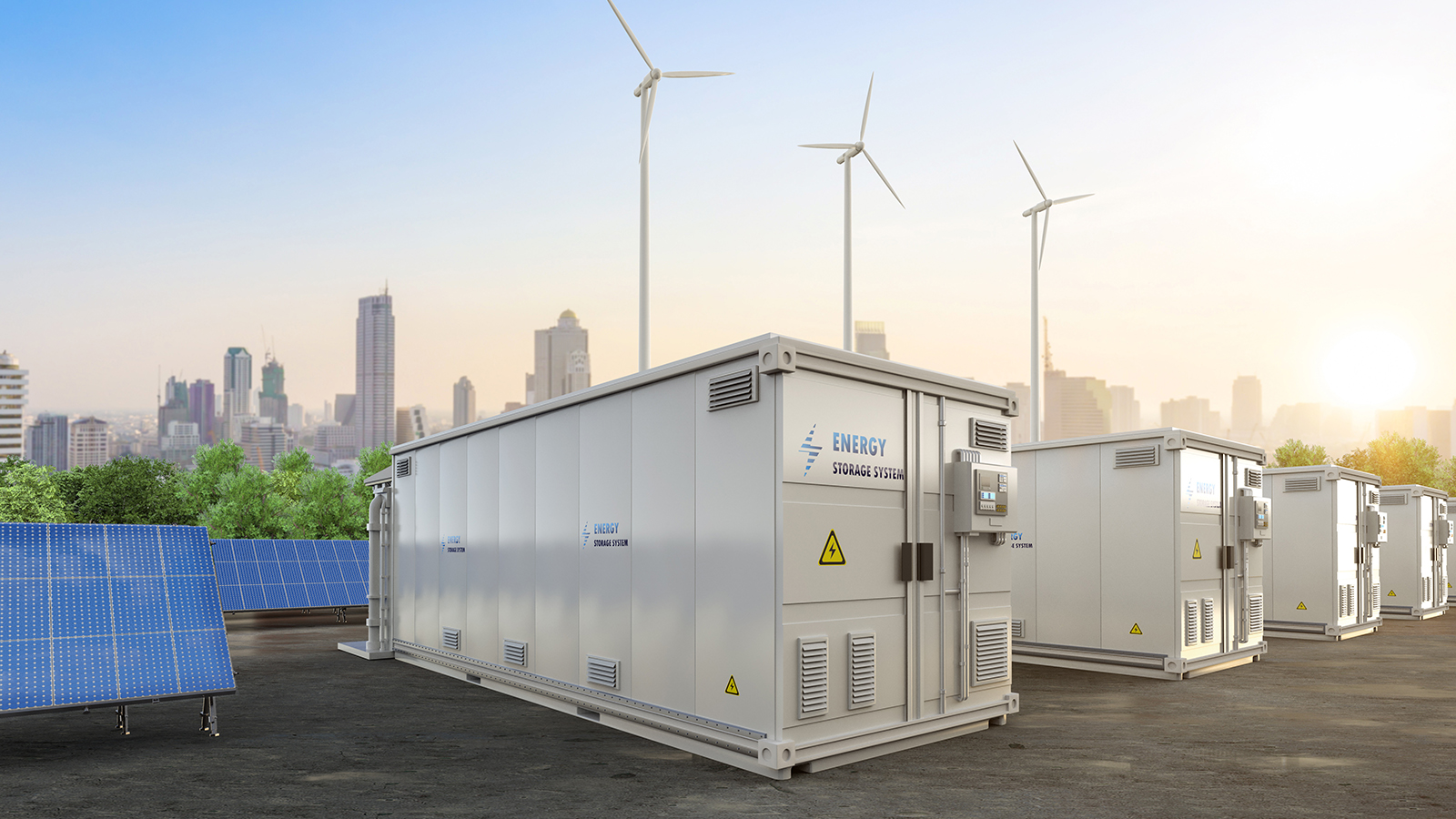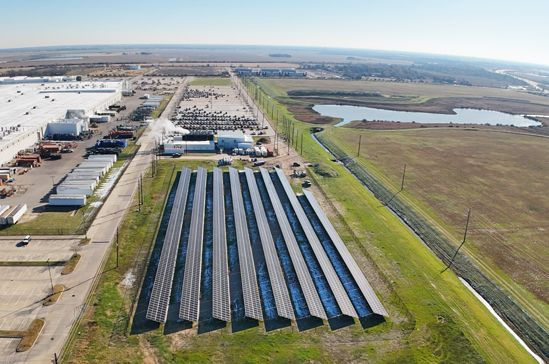Date:2025-06-10
I. Current Status of Thailand’s New Energy and Solar Power Development
1. Policy Targets and Strategic Planning
The Thai government is actively promoting its carbon neutrality goal, aiming to achieve carbon neutrality by 2050 and net-zero emissions by 2065. According to the Alternative Energy Development Plan (AEDP 2018–2037), renewable energy is expected to account for 51% of total electricity generation by 2037, with solar power projected to reach 15GW—almost 50% of the total renewable installed capacity. However, due to policy uncertainties, some clean energy projects (e.g., 2.1GW of solar and wind projects) have had their Power Purchase Agreement (PPA) signings paused, potentially delaying implementation and impacting overall energy transition progress.
2. Market Structure and Energy Transition Challenges
Thailand’s current energy structure remains heavily dependent on fossil fuels, which still account for 76% of its energy mix. Nevertheless, renewables now make up 15% of the total, with solar representing 24% of installed renewable capacity. According to the Power Development Plan (PDP 2018), the country needs to add 2.6GW of solar and wind capacity annually to meet its energy transition targets. However, long project timelines and complex approval procedures may hinder this process and affect sustainable market growth.
3. Economic and Investment Environment
In 2024, Thailand’s total investment applications reached USD 33 billion—a 35% increase year-on-year and the highest in a decade. Among these, renewable energy emerged as a key investment sector. The Electricity Generating Authority of Thailand (EGAT) has announced a USD 10 billion investment plan over the next five years to upgrade the transmission network, while the Provincial Electricity Authority (PEA) will invest USD 13 billion to develop a smart grid and install 15 million smart meters. These major infrastructure upgrades create favorable conditions for foreign investors entering the Thai new energy market.
4. Technical and Resource Advantages
Thailand’s geographic location provides abundant solar resources, with over 1,800 hours of annual sunshine and average solar radiation of 1,800 kWh/m²—making it one of the most suitable countries in Southeast Asia for large-scale solar deployment. In recent years, distributed solar has grown rapidly, accounting for over 60% of new installations in 2023. In 2024, total new solar installations are expected to reach 1.3GW, with 600MW from utility-scale projects and 700MW from distributed systems.

II. Market Opportunities and Development Potential
1. Utility-Scale Solar & Energy Storage Projects
Utility-Scale Solar Farms
Major projects are being developed, such as the 778MW Bhumibol Dam Solar Park. By 2030, Thailand’s total solar capacity is expected to exceed 35GW, significantly higher than earlier projections. This trend not only boosts renewable generation but also supports grid stability and energy diversity.
Energy Storage Demand
With the growing share of renewables, grid stability challenges are accelerating the development of the energy storage market. The Thai government is now collaborating with companies like Nuovo Plus and targets an additional 290MW of storage capacity by 2025, enhancing grid reliability and renewable integration.
2. Distributed Solar and Smart Energy Solutions
Government incentives—such as the Feed-in Tariff (FiT) policy offering rooftop solar systems a rate of THB 1.68/kWh—have encouraged residential and commercial solar adoption. Combined with the PEA’s smart metering initiatives, the integration of distributed energy resources is becoming more efficient, paving the way for a smarter energy future.
3. Policy Incentives and Financial Support
Subsidies and Tax Incentives
Solar PV projects are eligible for up to 25 years of FiT subsidies (e.g., THB 2.16/kWh), while solar-plus-storage projects receive up to THB 2.83/kWh. These incentives reduce upfront investment risks and provide strong returns for long-term development.
Renewable Energy Certificate (REC) Program
Thailand has launched a REC trading mechanism that allows companies to offset their carbon emissions by purchasing green certificates, creating new revenue streams and stimulating clean energy demand.
4. International Cooperation and Market Entry Channels
Exhibition Platform
In March 2026, Thailand will host the ASEAN SMART ENERGY & ENERGY STORAGE EXPO (ASEE). As one of Southeast Asia’s most influential energy events, ASEE provides a vital bridge for international and especially Chinese companies to enter the ASEAN market and expand global visibility.
Through ASEE, businesses can engage directly with buyers, government agencies, associations, and investors from Thailand, Indonesia, Vietnam, Malaysia, and Singapore. The event offers invaluable opportunities to showcase products, network with stakeholders, and gain insights into local and regional market dynamics.
Amid the global energy transition, Chinese companies—backed by advanced technologies and project expertise—are well-positioned to lead international cooperation. ASEE will help them leverage regional platforms to maximize strategic synergies and drive sustainable growth in the global energy industry.
China–Thailand Cooperation
With the implementation of mutual visa-free policies and China’s global leadership in PV technology, Thailand has become a major export destination for Chinese solar products. Bilateral cooperation is strengthening the solar supply chain and accelerating market expansion.
III. Challenges and Potential Risks
Policy Uncertainty
Recent halts in clean energy project procurement reveal ongoing challenges in policy coordination, which may delay project approvals and impact investor confidence.
Grid Infrastructure Bottlenecks
Thailand’s aging transmission lines cannot yet support high levels of renewable penetration. Grid modernization, especially through smart grid investments, is essential.
Tariff Pressure
While the government maintains residential electricity subsidies (e.g., THB 3.99/kWh), this policy may compress profit margins for solar developers.
Technology and Cost Competition
High battery storage costs and immature commercial models pose challenges. Thailand’s market still relies on foreign players—especially from China—to supply advanced storage solutions and accelerate local industry development.
IV. Conclusion & Strategic Recommendations
Thailand’s renewable energy market holds enormous potential, especially in utility-scale solar, energy storage, and distributed generation. However, successful market entry depends on navigating policy execution, infrastructure upgrades, and local partnerships.
Key strategies for investors:
✅ Focus on policy-backed segments: Invest in solar-storage integration and smart grid technologies for long-term competitiveness.
✅ Leverage industry events: Use platforms like ASEAN SMART ENERGY & ENERGY STORAGE EXPO to expand networks and form strategic alliances.
✅ Tap into distributed energy growth: Develop customized energy solutions tailored to local needs.
✅ Monitor policy shifts: Stay updated on PPAs and subsidy changes to manage investment risks.
The window of opportunity is open—now is the time to strategically position for long-term success in Thailand’s booming new energy market.
-------
ประเทศไทยก้าวสู่ยุคทองของพลังงานใหม่ — คุณพร้อมคว้าโอกาสหรือยัง?
I. สถานการณ์ปัจจุบันของพลังงานใหม่และพลังงานแสงอาทิตย์ในประเทศไทย
1. เป้าหมายนโยบายและแผนยุทธศาสตร์
รัฐบาลไทยกำลังผลักดันเป้าหมายความเป็นกลางทางคาร์บอน โดยตั้งเป้าคาร์บอนเป็นกลางภายในปี 2050 และปล่อยคาร์บอนสุทธิเป็นศูนย์ในปี 2065 ตาม แผนพัฒนาพลังงานทดแทน (AEDP 2018–2037) ที่วางเป้าหมายให้พลังงานหมุนเวียนมีสัดส่วน 51% ของกำลังผลิตไฟฟ้าทั้งหมดภายในปี 2037 และพลังงานแสงอาทิตย์อยู่ที่ 15 GW ซึ่งคิดเป็นเกือบ 50% ของพลังงานหมุนเวียนทั้งหมด อย่างไรก็ตาม ความไม่แน่นอนของนโยบายได้ทำให้โครงการพลังงานสะอาดบางโครงการ (เช่น โซลาร์และลมขนาด 2.1 GW) ต้องชะลอการทำสัญญา PPA ซึ่งอาจส่งผลให้การเปลี่ยนผ่านพลังงานล่าช้า
2. โครงสร้างตลาดและความท้าทายด้านการเปลี่ยนผ่านพลังงาน
ไทยยังคงพึ่งพาเชื้อเพลิงฟอสซิลในสัดส่วนสูงถึง 76% ขณะที่พลังงานหมุนเวียนอยู่ที่ 15% โดยโซลาร์คิดเป็น 24% ของพลังงานหมุนเวียนทั้งหมด ตาม แผนพัฒนากำลังผลิตไฟฟ้า (PDP 2018) ประเทศต้องขยายโซลาร์และลมปีละ 2.6 GW เพื่อให้เป็นไปตามเป้าหมาย แต่กระบวนการพัฒนาโครงการที่ซับซ้อนอาจเป็นอุปสรรคต่อการเติบโตอย่างยั่งยืน
3. สภาพแวดล้อมทางเศรษฐกิจและการลงทุน
ในปี 2024 ไทยมีการยื่นขอส่งเสริมการลงทุนรวม 33 000 ล้านดอลลาร์สหรัฐ (เพิ่มขึ้น 35%) ซึ่งเป็นระดับสูงสุดในรอบทศวรรษ โดยพลังงานหมุนเวียนเป็นหนึ่งในโครงการหลัก การไฟฟ้าฝ่ายผลิตฯ (EGAT) วางแผนลงทุน 10 000 ล้านดอลลาร์ใน 5 ปีข้างหน้าเพื่อปรับปรุงระบบส่งไฟฟ้า ส่วนการไฟฟ้าส่วนภูมิภาค (PEA) จะลงทุน 13 000 ล้านดอลลาร์เพื่อพัฒนาโครงข่ายอัจฉริยะและติดตั้งมิเตอร์อัจฉริยะ 15 ล้านชุด ซึ่งเป็นโอกาสที่ดีสำหรับนักลงทุนต่างชาติ
4. ข้อได้เปรียบด้านทรัพยากรและเทคโนโลยี
ประเทศไทยมีแสงอาทิตย์มากกว่า 1 800 ชั่วโมงต่อปี และมีค่ารังสีเฉลี่ย 1 800 kWh/m² ทำให้เหมาะกับการติดตั้งโซลาร์ขนาดใหญ่ในอาเซียน การติดตั้งโซลาร์แบบกระจายเติบโตเร็ว โดยในปี 2023 มีสัดส่วนมากกว่า 60% ของกำลังติดตั้งใหม่ และในปี 2024 คาดว่ามีกำลังผลิตใหม่รวม 1.3 GW ได้แก่ โซลาร์ฟาร์ม 600 MW และโซลาร์กระจาย 700 MW
II. โอกาสตลาดและศักยภาพในการพัฒนา
1. โครงการโซลาร์ขนาดใหญ่และระบบกักเก็บพลังงาน
โซลาร์ฟาร์มขนาดสาธารณูปโภคโครงการเด่นเช่น โซลาร์ฟาร์มเขื่อนภูมิพล 778 MW โดยในปี 2030 คาดว่ากำลังผลิตโซลาร์รวมในไทยจะเกิน 35 GW ซึ่งเกินเป้าหมายเดิมอย่างมาก ทำให้ระบบไฟฟ้ามีความมั่นคงและหลากหลายมากขึ้น
ความต้องการระบบกักเก็บพลังงานการที่พลังงานหมุนเวียนเพิ่มขึ้นก่อให้เกิดความเสี่ยงด้านความเสถียรของระบบไฟฟ้า รัฐบาลไทยได้ร่วมมือกับบริษัทอย่าง Nuovo Plus และตั้งเป้าเพิ่มระบบกักเก็บอีก 290 MW ภายในปี 2025 เพื่อเสริมความมั่นคงของกริดและรองรับพลังงานหมุนเวียน
2. พลังงานโซลาร์แบบกระจายและพลังงานอัจฉริยะ
นโยบาย Feed-in Tariff (FiT) ที่ให้ราคารับซื้อไฟโซลาร์บนหลังคาเฉลี่ย THB 1.68/kWh ได้กระตุ้นให้ทั้งภาคครัวเรือนและภาคธุรกิจเริ่มลงทุนโซลาร์หลังคาอย่างต่อเนื่อง ร่วมกับการติดตั้งมิเตอร์อัจฉริยะจาก PEA ทำให้การรวมระบบพลังงานแบบกระจายมีประสิทธิภาพมากยิ่งขึ้น
3. สิทธิประโยชน์ด้านนโยบายและการเงิน
เงินอุดหนุนและสิทธิประโยชน์ทางภาษีโครงการ PV ได้รับ FiT สูงสุดถึง 25 ปี (THB 2.16/kWh) ส่วนโครงการโซลาร์พร้อมระบบกักเก็บได้รับ FiT สูงถึง 2.83 THB/kWh
โครงการใบรับรองพลังงานหมุนเวียน (REC)ระบบนี้เปิดโอกาสให้ธุรกิจสามารถซื้อ REC เพื่อชดเชยการปล่อยคาร์บอนได้ ช่วยสร้างกระแสรายได้และกระตุ้นความต้องการตลาดพลังงานสะอาด
4. ความร่วมมือระหว่างประเทศและช่องทางเข้าสู่ตลาด
แพลตฟอร์มงานแสดงสินค้าในเดือนมีนาคม 2026 ไทยจะจัด มหกรรมพลังงานอัจฉริยะและการจัดเก็บพลังงานแห่งอาเซียน ซึ่งเป็นหนึ่งในงานแสดงเทคโนโลยีพลังงานสะอาดที่ทรงอิทธิพลที่สุดในอาเซียน โดยเปิดโอกาสให้บริษัทต่างประเทศ เชื่อมโยงกับผู้ซื้อ หน่วยงานรัฐ สมาคม และนักลงทุนจากไทย อินโดนีเซีย เวียดนาม มาเลเซีย และสิงคโปร์
ความร่วมมือจีน–ไทยด้วยนโยบายยกเว้นวีซ่าและความก้าวหน้าทางเทคโนโลยีโซลาร์ของจีน ไทยจึงกลายเป็นตลาดสำคัญที่รองรับการส่งออกผลิตภัณฑ์โซลาร์จากจีน ความร่วมมือนี้ช่วยเสริมประสิทธิภาพห่วงโซ่อุปทานและขยายตลาดได้เร็วขึ้น

III. ความท้าทายและความเสี่ยงที่อาจเกิดขึ้น
ความไม่แน่นอนด้านนโยบายการชะลอการจัดซื้อโครงการสะอาดชี้ถึงความจำเป็นในการประสานงานและบริหารนโยบายอย่างชัดเจน เพื่อไม่ให้เกิดความผิดหวังต่อนักลงทุน
ข้อจำกัดของโครงข่ายไฟฟ้าระบบสายส่งที่เก่าล้าสมัยยังไม่รองรับการผลิตไฟฟ้าจากพลังงานหมุนเวียนในระดับสูง การลงทุนในโครงข่ายอัจฉริยะจึงเป็นเรื่องเร่งด่วน
แรงกดดันด้านค่าไฟฟ้าการที่รัฐบาลตรึงราคาค่าไฟในภาคครัวเรือน (THB 3.99/kWh) อาจลดแรงจูงใจในการลงทุนด้านโซลาร์
การแข่งขันด้านเทคโนโลยีและต้นทุนค่ากักเก็บพลังงานยังสูง และหลายธุรกิจยังไม่มีโมเดลที่เสถียร ตลาดไทยจึงยังพึ่งพาบริษัทต่างชาติ โดยเฉพาะจีน เพื่อเสริมสร้างระบบกักเก็บที่มีศักยภาพ
IV. สรุป & คำแนะนำเชิงกลยุทธ์
ตลาดพลังงานใหม่ของไทยเต็มไปด้วยโอกาส โดยเฉพาะโซลาร์ระดับสาธารณูปโภค ระบบกักเก็บ และโซลาร์แบบกระจาย แต่ความสำเร็จขึ้นอยู่กับการบริหารนโยบาย, การอัพเกรดโครงข่าย, และการสร้างความร่วมมือในท้องถิ่น
กลยุทธ์สำคัญสําหรับนักลงทุน:
✅ ลงทุนในกลุ่มที่ได้รับนโยบายสนับสนุน: เช่น โครงการโซลาร์+ระบบกักเก็บ และเทคโนโลยีสมาร์ทกริด
✅ ใช้ประโยชน์จากเวทีอุตสาหกรรม: โดยเฉพาะงาน มหกรรมพลังงานอัจฉริยะและการจัดเก็บพลังงานแห่งอาเซียน เพื่อขยายเครือข่ายและพันธมิตร
✅ เจาะตลาดพลังงานแบบกระจาย: พัฒนาสินค้าและบริการให้เหมาะกับหน่วยงานและครัวเรือนไทยโดยเฉพาะ
✅ ติดตามแนวโน้มด้านนโยบาย: เช่น ความคืบหน้าของ PPA และการปรับ FIT เพื่อลดความเสี่ยงด้านการลงทุน
โอกาสในตลาดพลังงานใหม่ของไทยเปิดกว้างแล้ว — พร้อมแล้วที่จะลงมือสร้างความสำเร็จระยะยาวหรือยังครับ?


 Location >>
Location >> 
